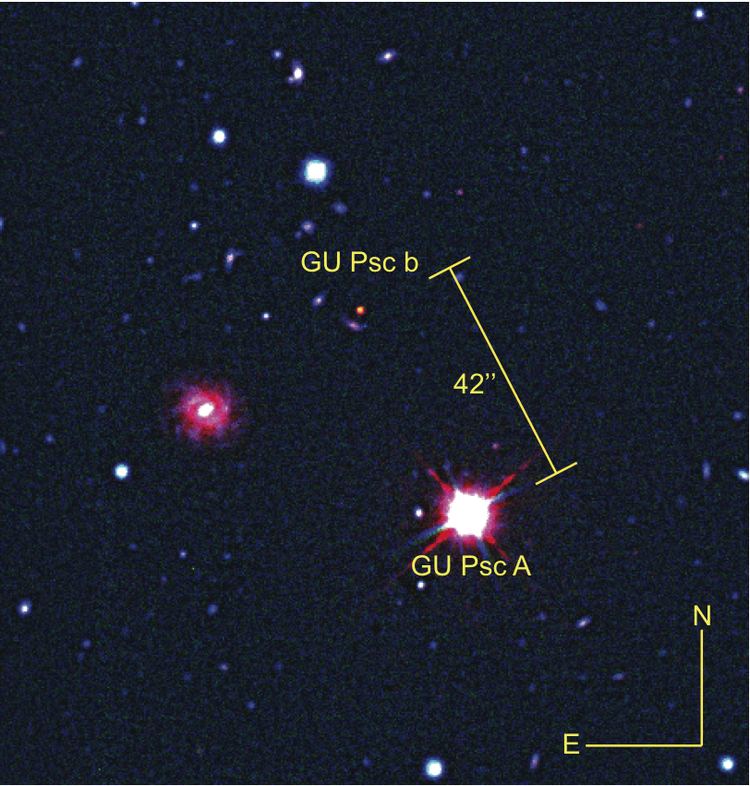Semi-major axis 2000 AU Mass 9–13 MJ | Orbital period 163,000 years | |
 | ||
Discovered by Marie-Eve Naud, Étienne Artigau, Lison Malo, Loïc Albert, René Doyon, David Lafrenière, Jonathan Gagné, Didier Saumon, Caroline V. Morley, France Allard, Derek Homeier, Charles A. Beichman, Christopher R. Gelino, Anne Boucher | ||
GU Piscium b (GU Psc b) is a directly imaged planetary-mass companion orbiting the star GU Piscium, with an extremely large orbit of 2,000 AU (3.0×1011 km), and an apparent angular separation of 42 arc seconds. The planet is located at right ascension 01h 12m 36.48s declination +17° 04′ 31.8″ at a distance of 48 pc (160 ly).
Contents
Properties
An orbital revolution around its parent star (which is 1/3 the mass of the Sun) or "year", would take approximately 163,000 years to complete, considering a circular orbit with 2000 AU as the semi-major axis. It is a gas giant located in the constellation of Pisces, 155 light-years from the Solar System, and estimated to have a mass nine to thirteen times that of Jupiter, and a surface temperature of 1000 K.
It is a relatively young stellar system, part of the AB Doradus moving group of ca. 30 main stars created from the same molecular cloud less than 100 million years ago, and the only one found among the 90 stars of the group examined.
Discovery
The discovery was made by an international team of astronomers led by Marie-Eve Naud of the Université de Montréal in Quebec, combining observations from telescopes of the Gemini Observatory, the Observatoire du Mont-Mégantic (OMM), the Canada-France-Hawaii Telescope (CFHT) and the W.M. Keck Observatory. Its large distance away permitted the use of combined infra-red and visible light images to detect it, a technique astronomers hope to reproduce to discover much closer planets with the Gemini Planet Imager (GPI) in Chile.
Near-infrared spectroscopy of the companion was obtained with the GNIRS spectrograph on the Gemini North Telescope, which shows evidence of low surface gravity confirming the planet's youth. Weak methane absorption was detected in H and K band corresponding to a spectral type of T3.5.
